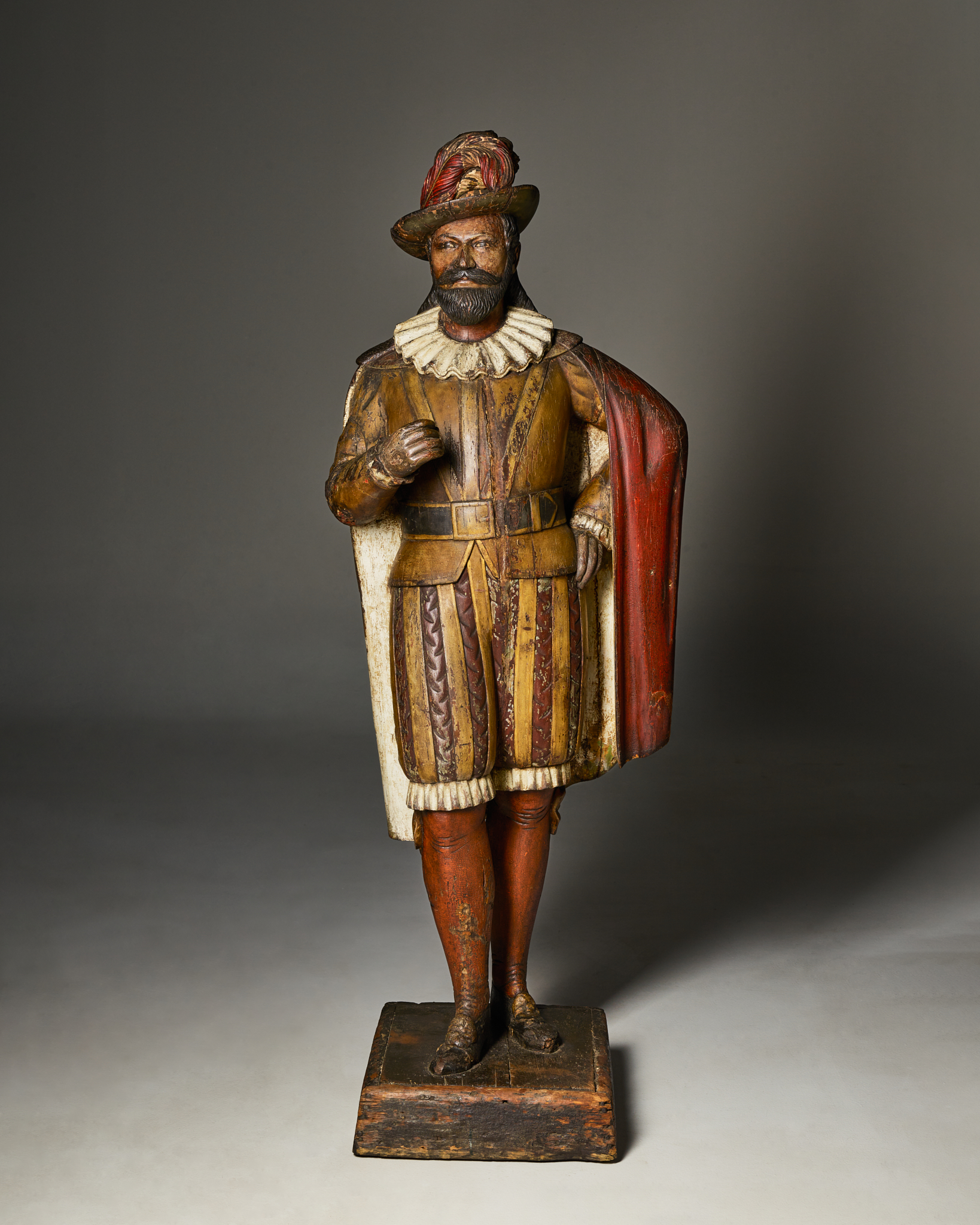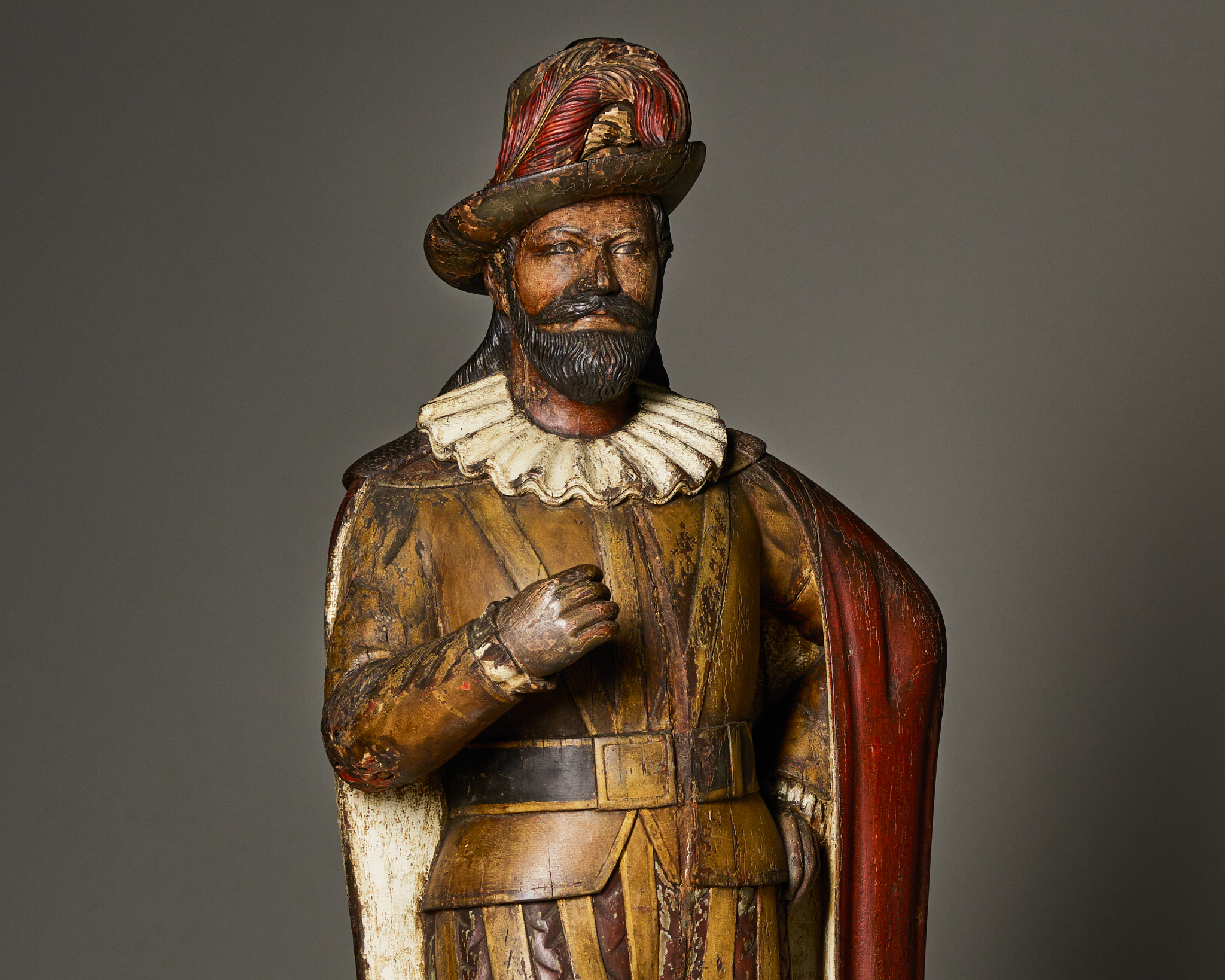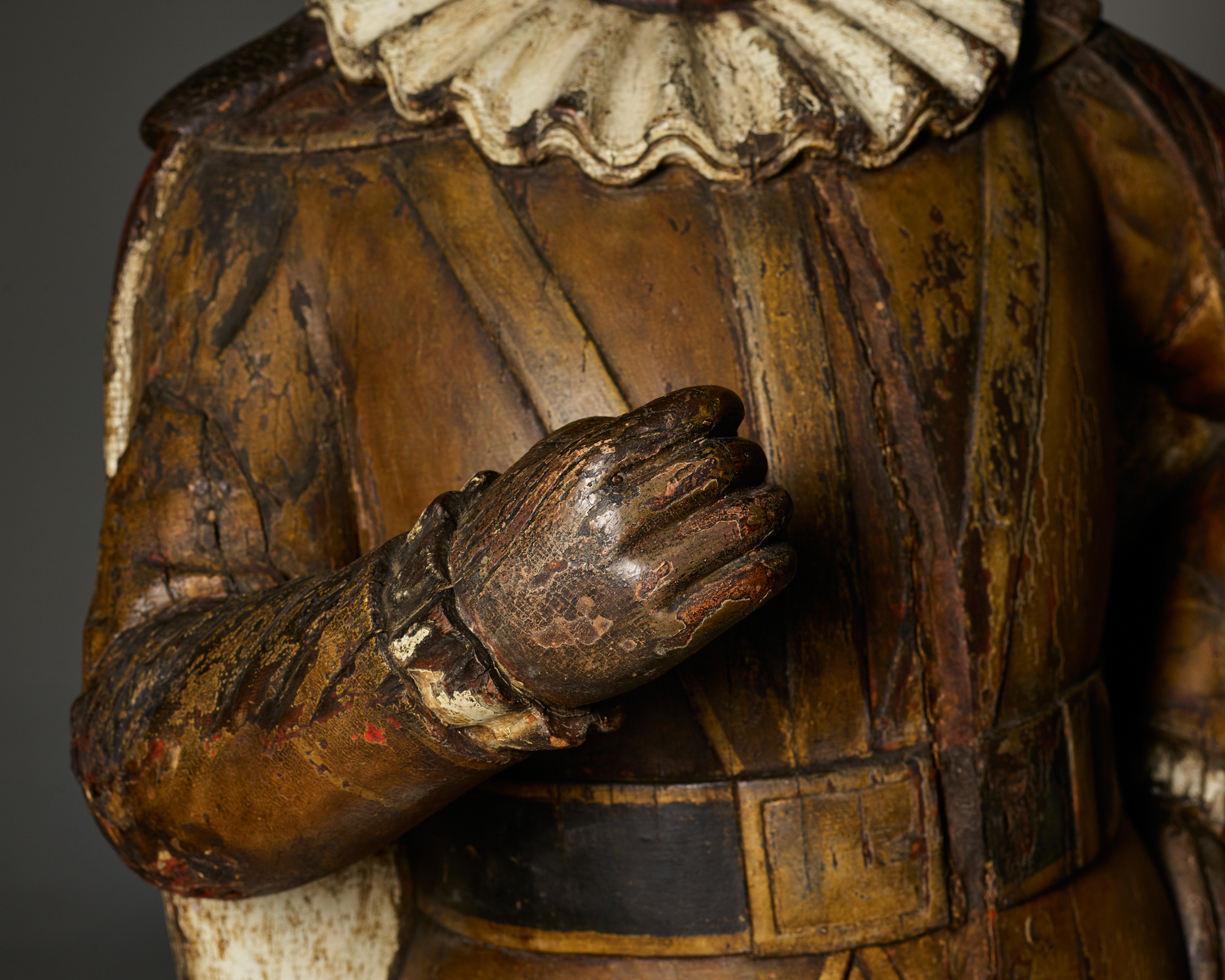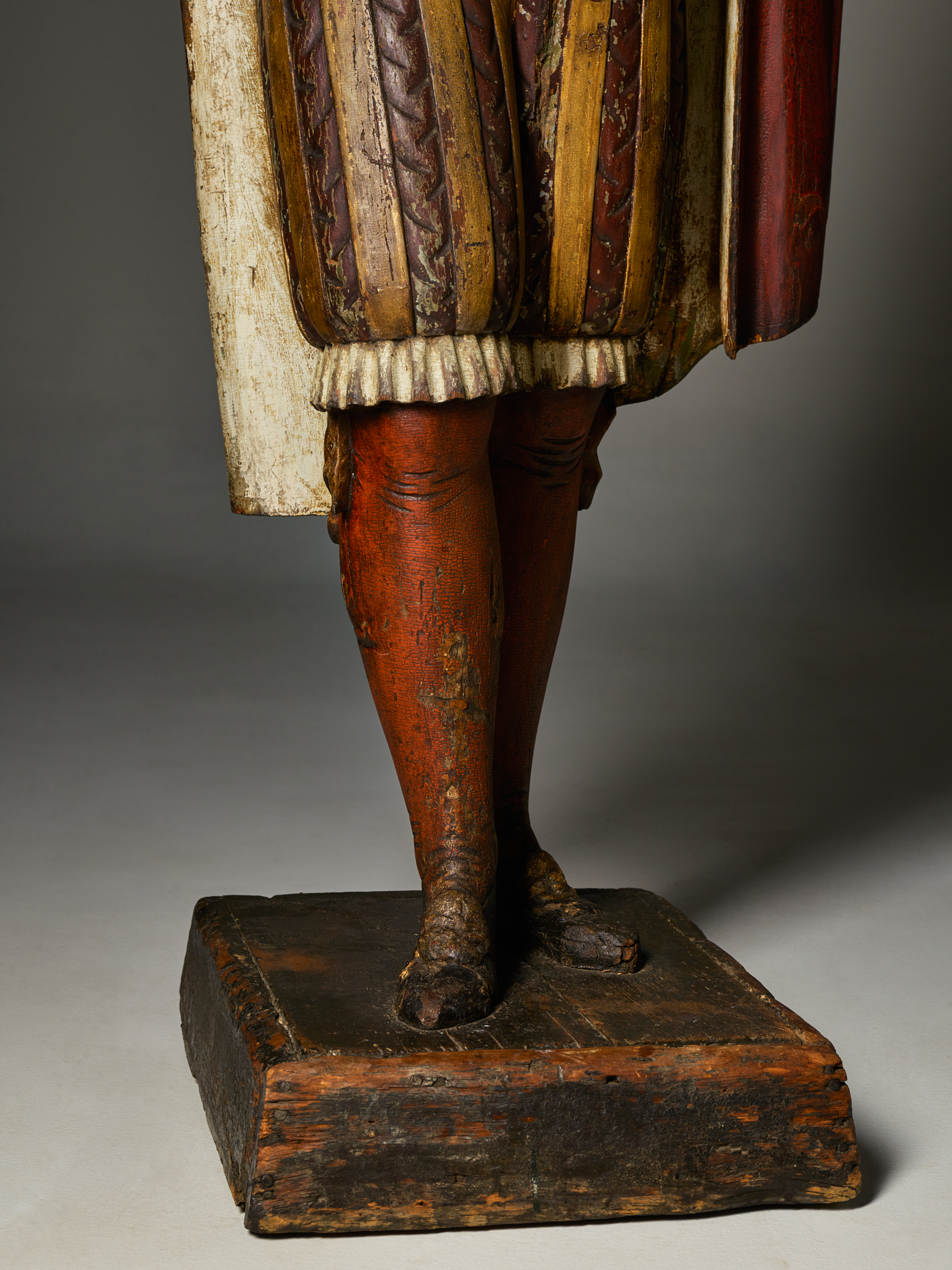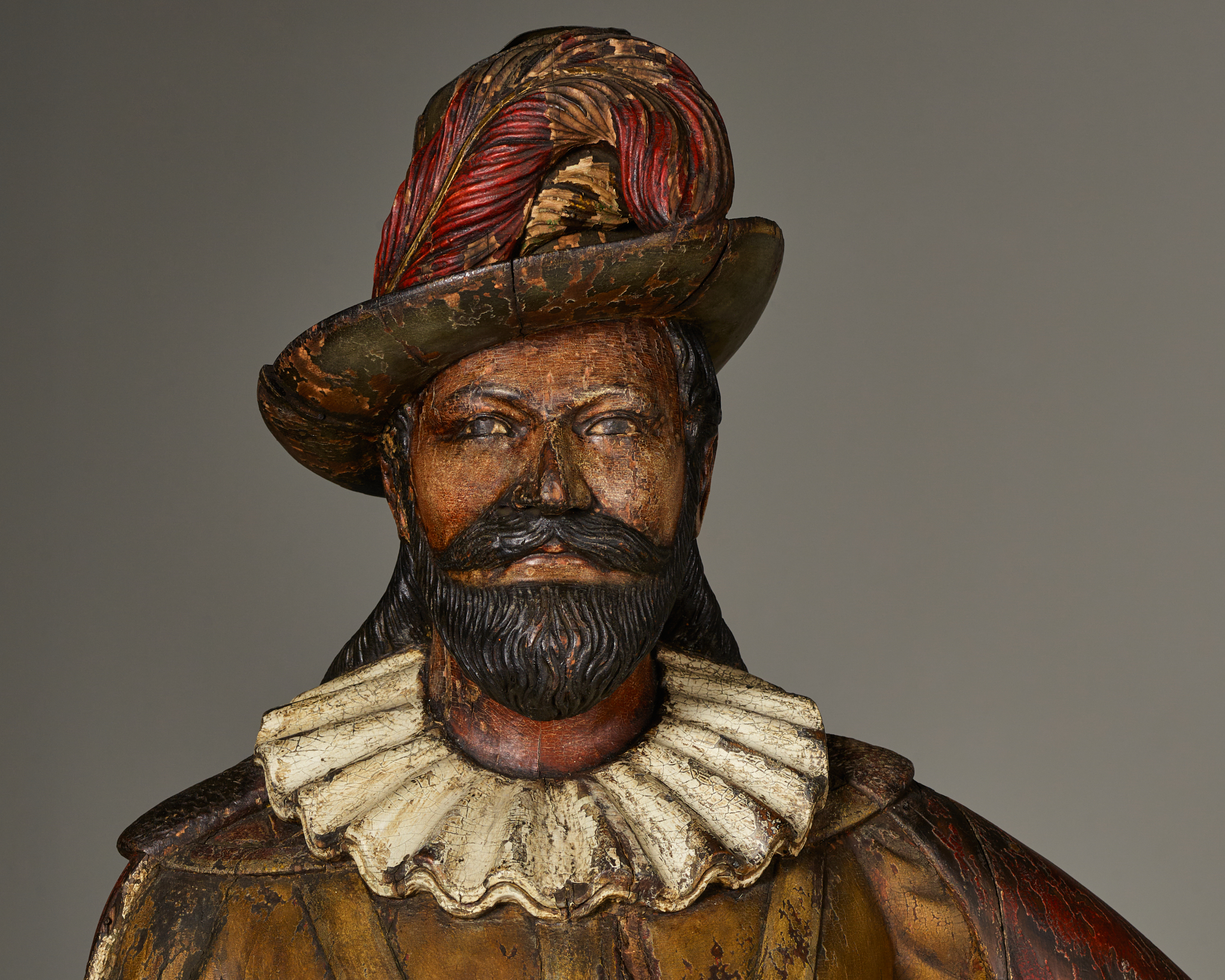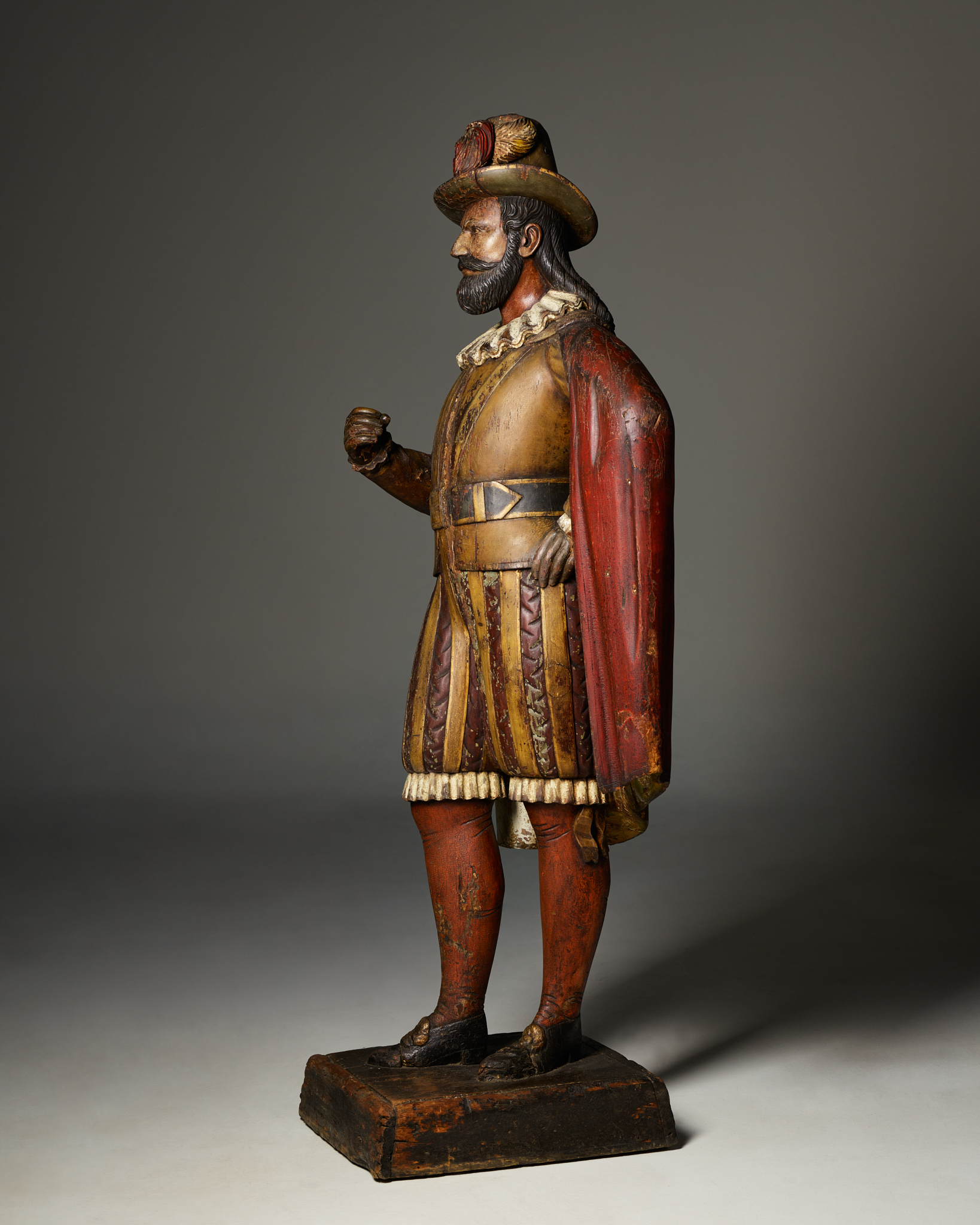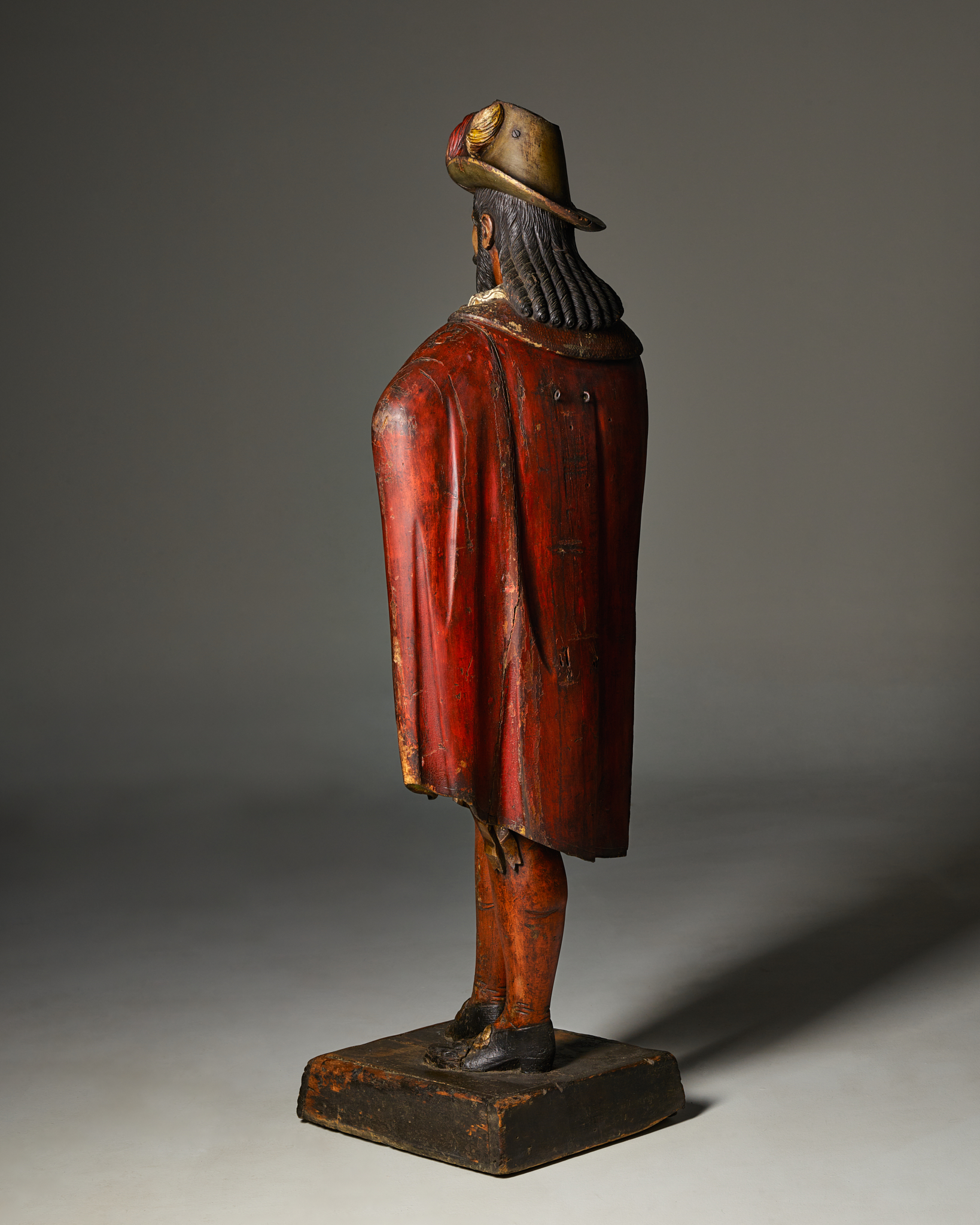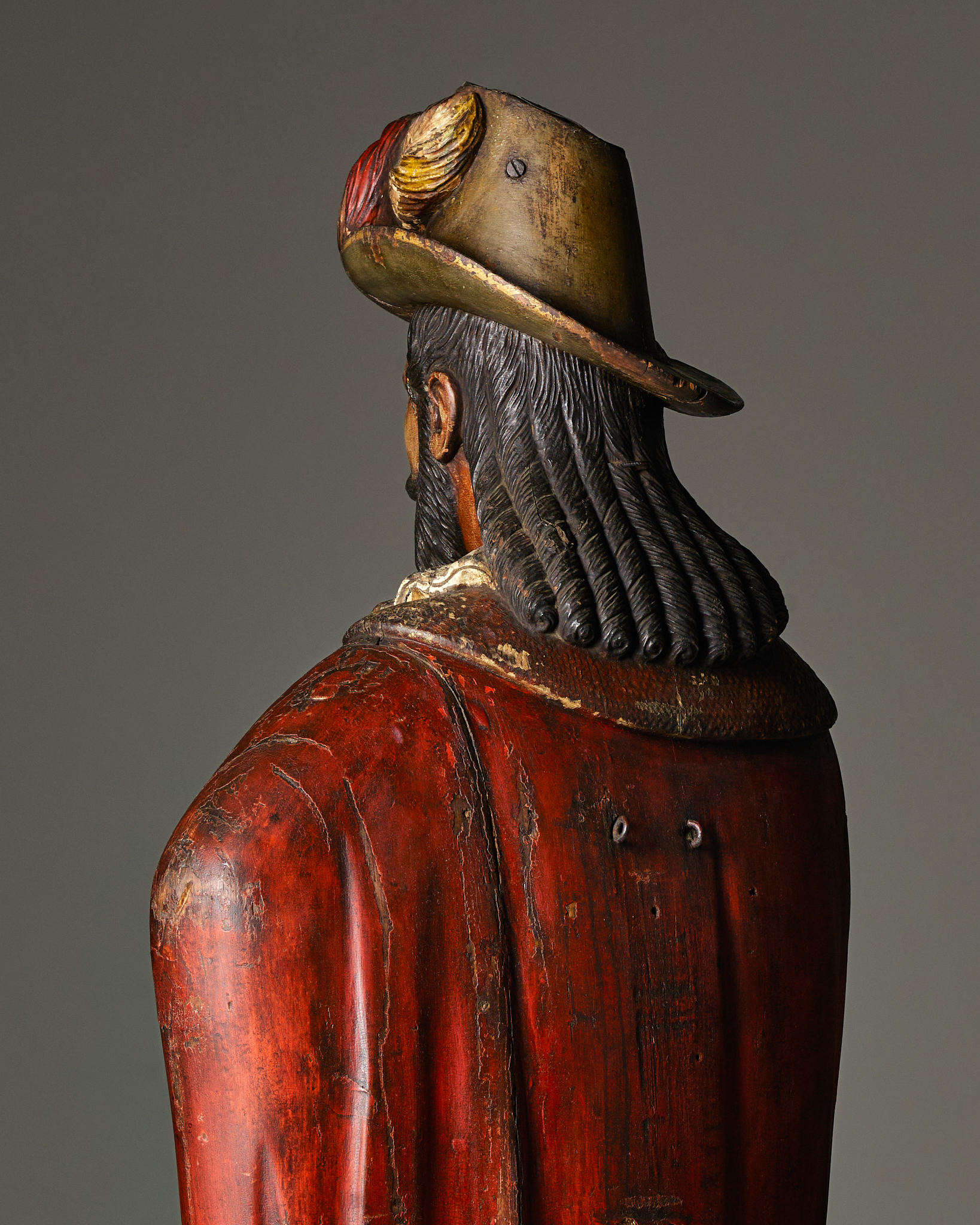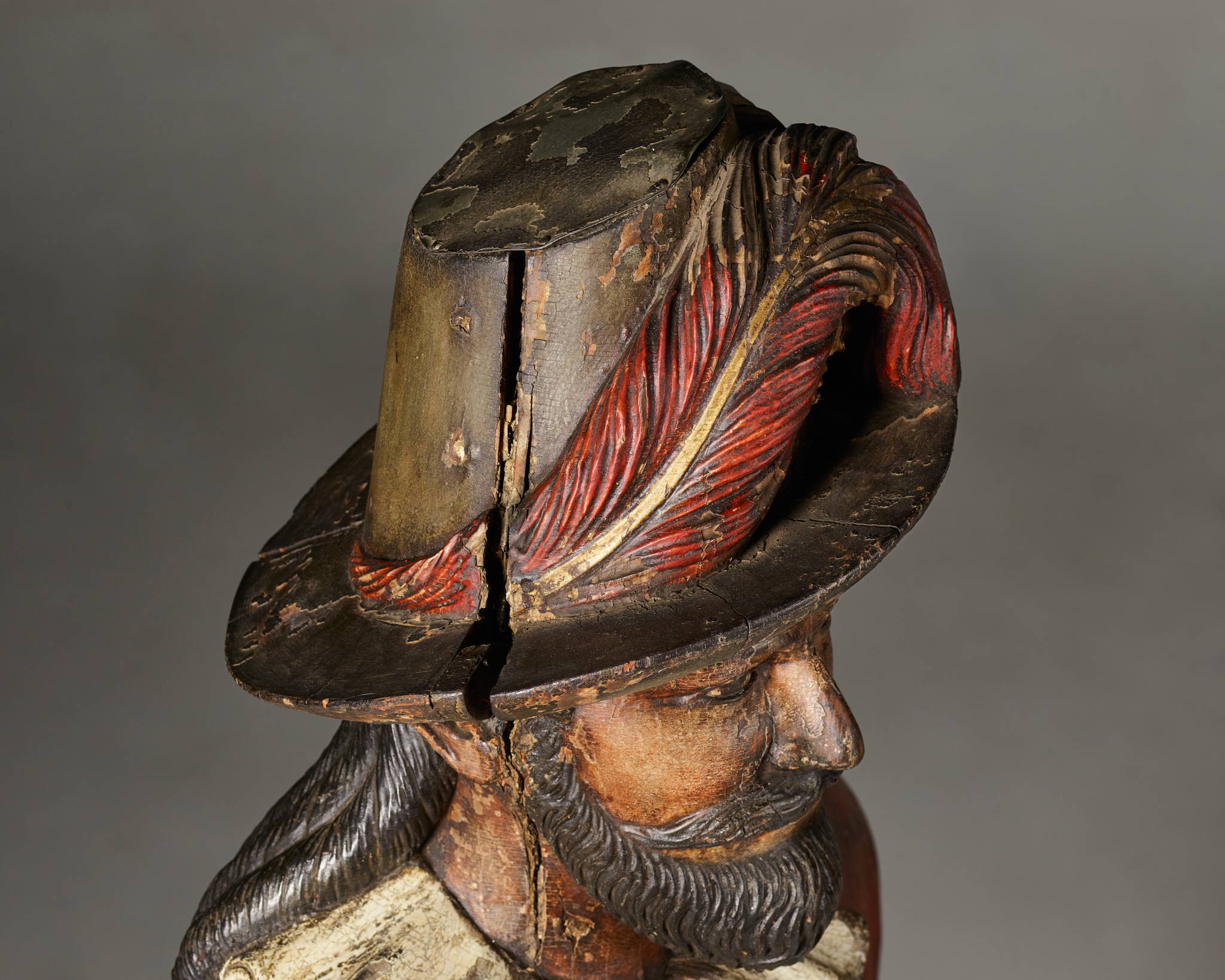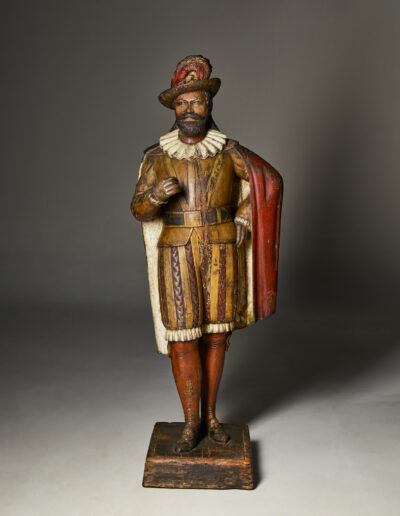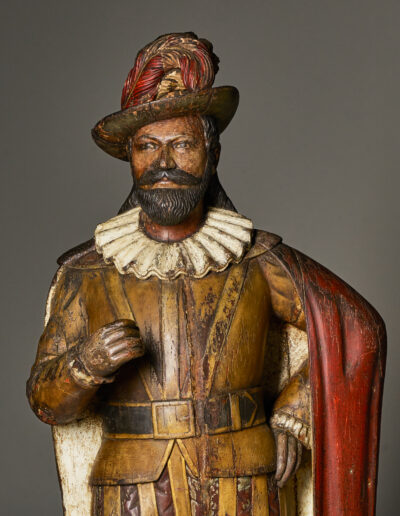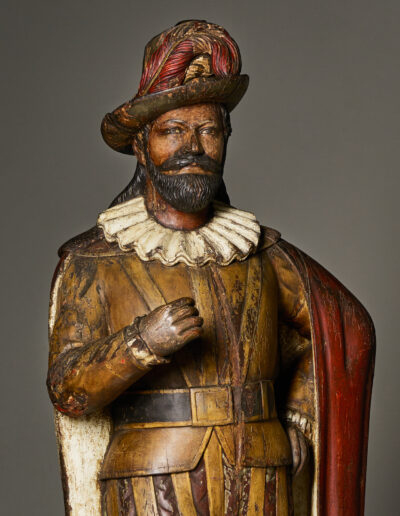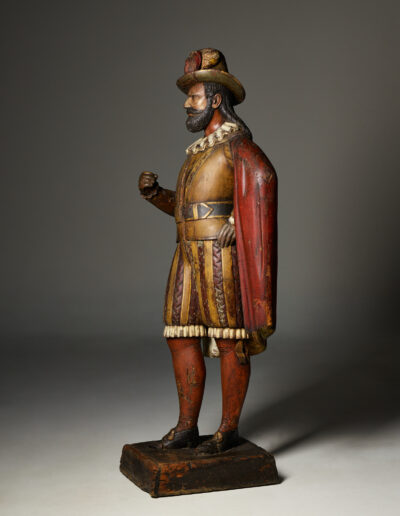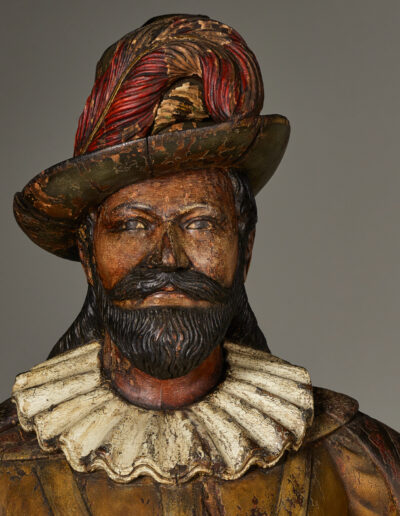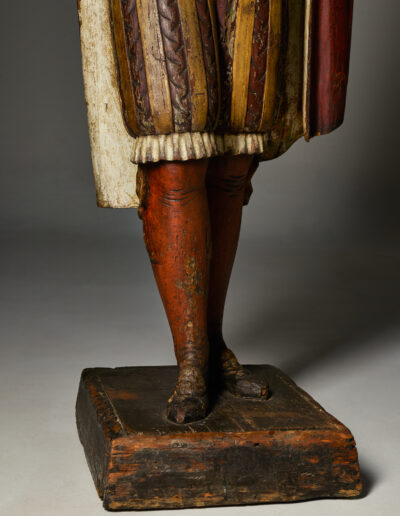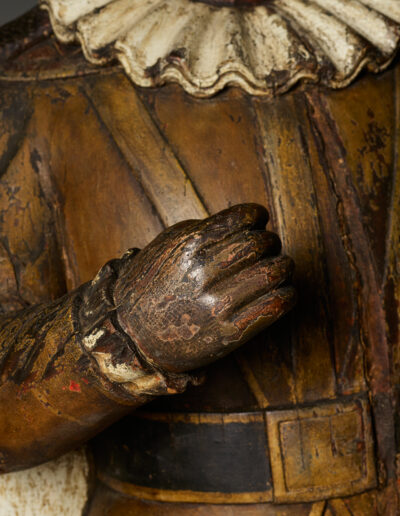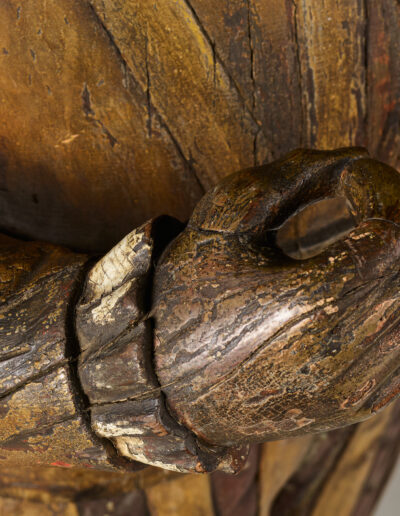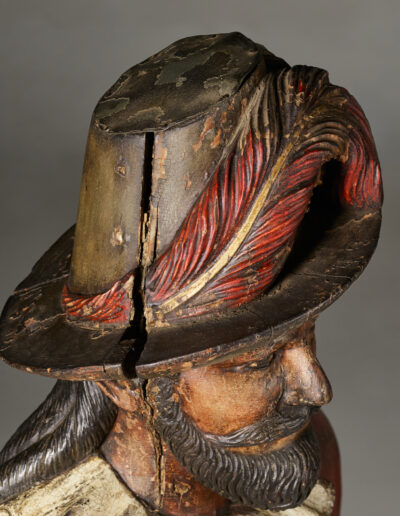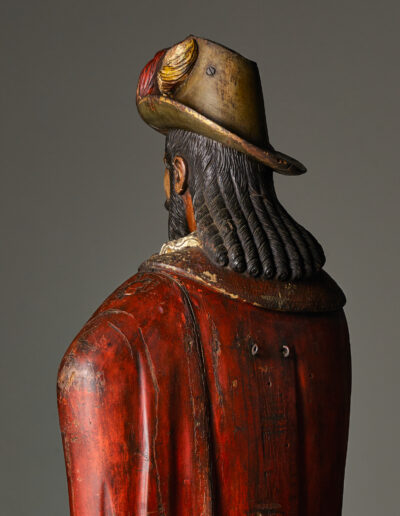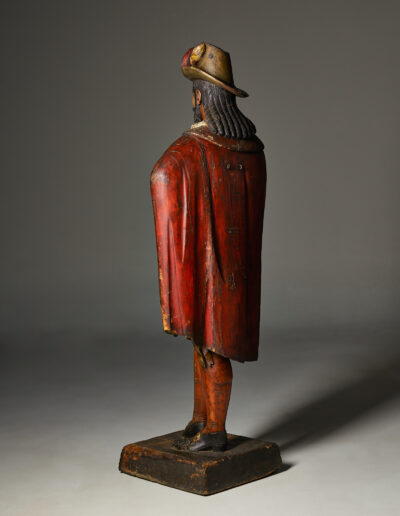Sir Walter Raleigh Tobacco Trade Figure
Attributed to Samuel Robb (1851-1928)
Paint on white pine
79” high
Circa 1884
This figure is an extremely rare form in 19th century tobacco trade figures and represents the highest level of tobacco trade carving in America. Retains a historic period paint-decorated surface with old varnish overcoat
Provenance: From the collection of Charles W. Sawyer, Winston-Salem, North Carolina. The figure was displayed at the entrance of the Brown and Williamson Tobacco Company’s headquarters in Louisville, Kentucky. Mr. Sawyer worked for Brown and Williamson for three decades beginning his career as a foreman in charge of the manufacture of Sir Walter Raleigh brand tobacco and ending as an executive based in Winston-Salem, North Carolina. He acquired the present trade figure from his employer in 1964 when the company was clearing out its warehouses in Louisville.
The figure was originally commissioned by the J.G. Flynt Tobacco Company when it launched its Sir Walter Raleigh Pipe Tobacco brand in 1884. Brown and Williamson purchased J.G. Flynt and all of its trademarks in 1925 and began to distribute Sir Walter Raleigh pipe tobacco nationally and it eventually became one of B & W’s hallmark brands. In 1929 all divisions of Brown & Williamson except chewing tobacco and snuff were moved to Louisville, Ky., and headquarters for the company remain there.
The figure is illustrated in the 1953 book Cigar Store Figures in American Folk Art by A.W. Pendergast and W. Porter Ware (page 26). The picture was supplied by the Brown and Williamson Corporation and shows the figure in the Headquarters building.
The figure is attributed to the shop of Samuel A. Robb, best known as the skillful carver behind numerous cigar store Indians, circus trains and other shop figures in museum galleries and private collections. His father, Peter Robb was a Scottish-born ship carpenter and his mother, Elizabeth Anderson belonged to a New York family of ship carvers. It is thought that Robb began his career as a teenage apprentice for Thomas V. Brooks (1828-1895) who was a leading carver of ship and shop figures in New York and Chicago. Robb then went to work for William Demuth (1835-1911) whose company, William Demuth & Co., mass produced shop figures based on Robb’s models. In 1876 Robb opened his own shop and by the 1880’s it had become the largest figure carving shop in New York City.
